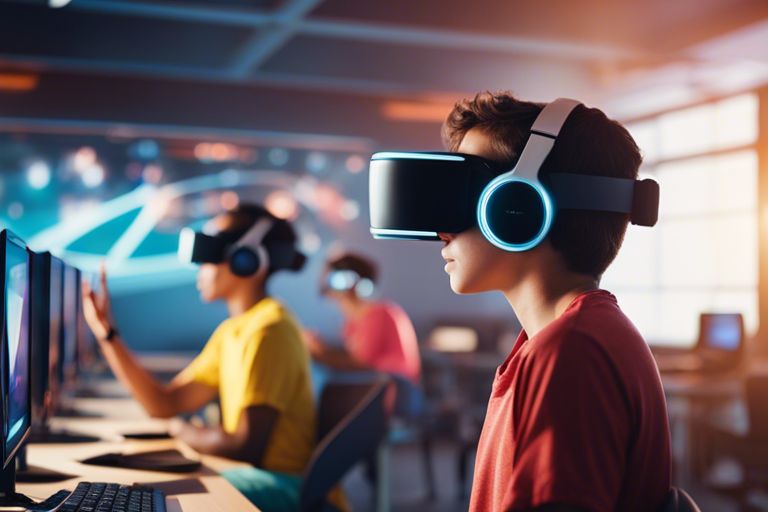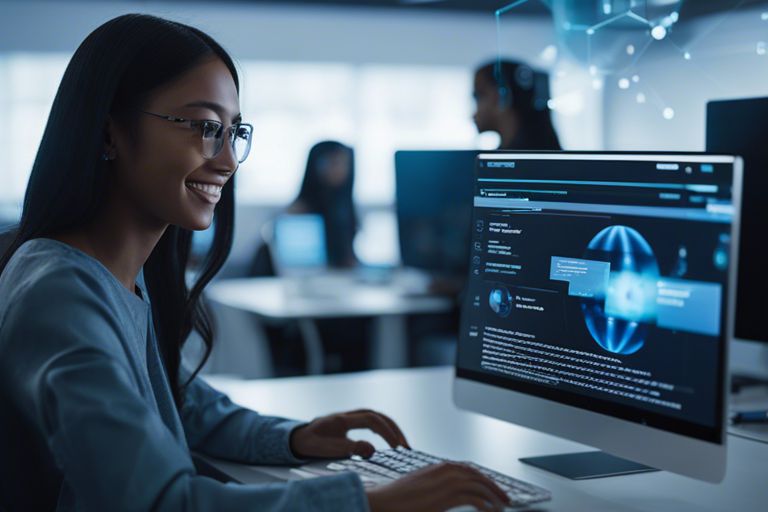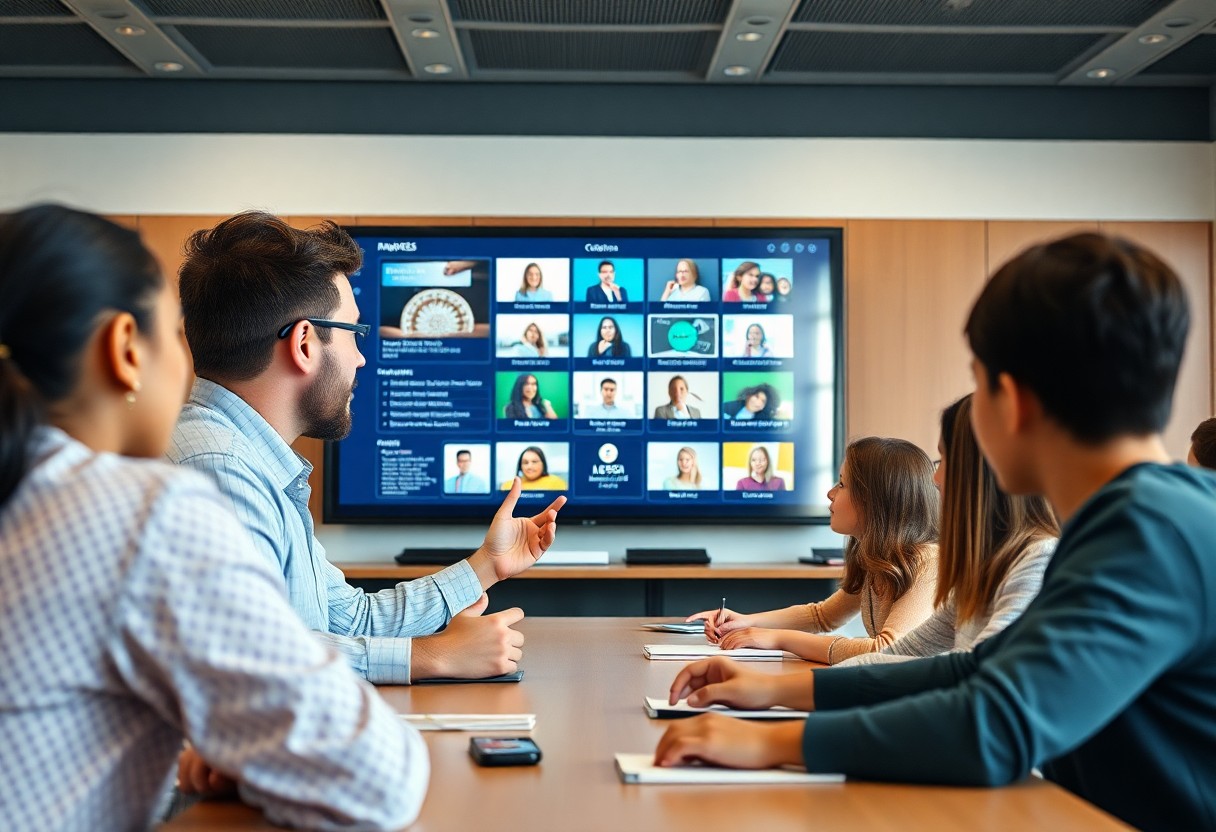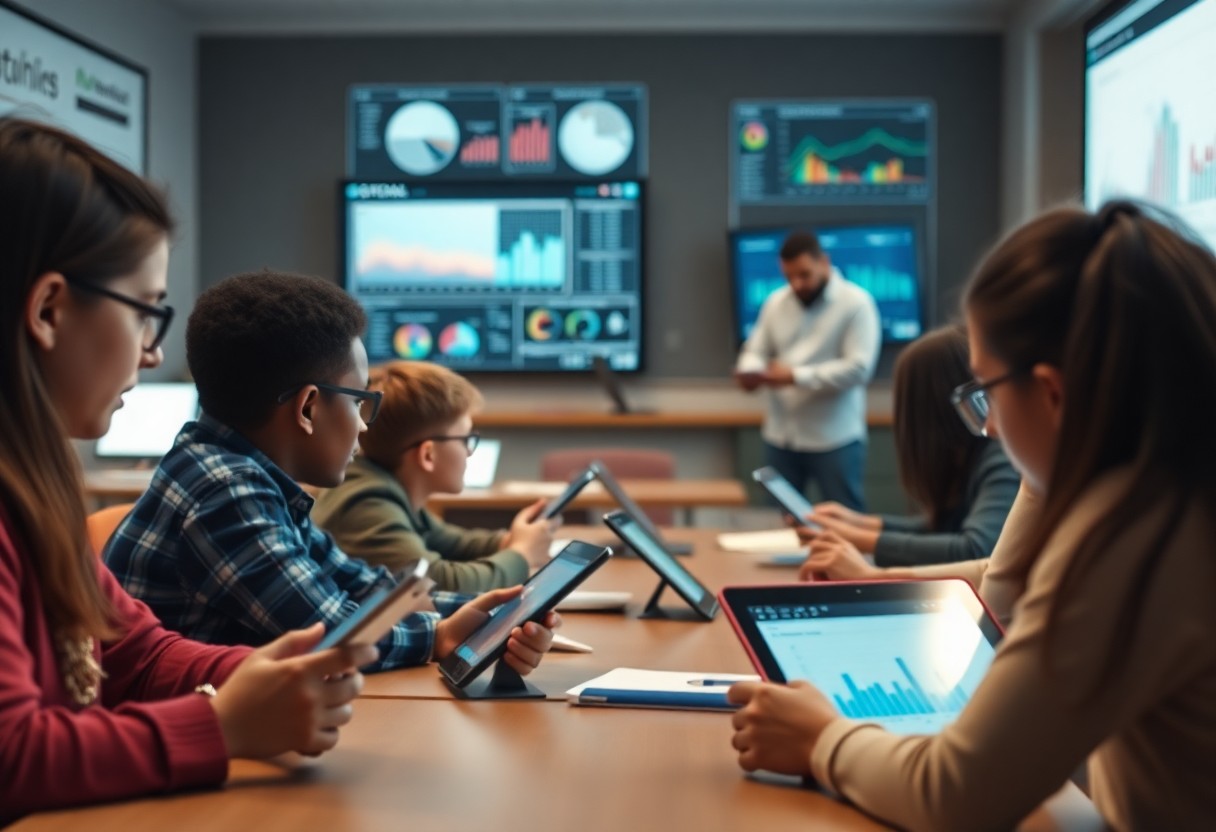#Learning in the digital age has taken on a whole new dimension with the rise of gamified learning. This innovative approach to education incorporates game elements to make learning fun, interactive, and engaging for students. By integrating game mechanics like points, rewards, and challenges into educational content, gamified learning captivates students’ attention and motivates them to actively participate in their learning journey. Let’s probe into how gamified learning is revolutionizing traditional classroom settings and enhancing students’ overall educational experience.
The Concept of Gamification
Definition and Origins
To understand the concept of gamification better, it is important to recognize that it involves applying game design elements and principles in non-game contexts, such as education. The idea behind gamification is to make learning more engaging and enjoyable by integrating elements of games, such as competition, rewards, and challenges, into the educational process. Originating in the early 2000s, gamification has gained popularity as a powerful tool for enhancing student motivation and participation.
Key Elements of Gamification
To create effective gamified learning experiences, several key elements need to be considered. These include setting clear goals and objectives, providing instant feedback to students, incorporating elements of competition or collaboration, and offering rewards or recognition for achievements. By integrating these elements into the learning process, educators can create a more dynamic and interactive environment that encourages students to stay motivated and focused on their studies.
On top of these key elements, it is important to create a sense of progression and achievement within the educational journey. Students should feel a sense of accomplishment as they overcome challenges, acquire new skills, and reach milestones. This sense of progress not only boosts motivation but also helps students develop a growth mindset and a passion for learning.
Gamification in education has the potential to revolutionize the way students engage with course material, making learning more fun, interactive, and memorable. By incorporating game elements into the educational experience, educators can cater to the diverse learning styles of students and create a more dynamic and stimulating learning environment.
The Benefits of Gamified Learning
Increased Engagement and Motivation
To truly harness the power of learning, students must be engaged and motivated. Assuming the role of the protagonist in a game, learners are naturally more invested in their educational journey. By incorporating elements of competition, rewards, and progression, gamified learning increases engagement levels and motivates students to actively participate in their learning process.
Improved Learning Outcomes and Retention
Increased interaction and participation lead to improved learning outcomes and better retention of information. When students are absorbed in a gamified environment, they are more likely to remember key concepts and apply them in different scenarios. Plus, the immediate feedback provided in gamified learning helps students track their progress and make necessary adjustments to enhance their understanding.

How Gamification Works in Education
You may wonder how gamification works in education and why it has become such a popular approach to student learning. The key lies in integrating game mechanics into educational activities to make them more engaging and interactive for students. By incorporating elements such as rewards, competition, and collaboration, educators can create a dynamic learning environment that keeps students motivated and eager to learn.
Point Systems and Rewards
One of the fundamental aspects of gamification in education is the use of point systems and rewards. Students earn points for completing tasks, answering questions correctly, or reaching certain milestones in their learning journey. These points can be accumulated to unlock rewards or incentives, encouraging students to stay on track and remain focused on their educational goals. This system not only fosters a sense of achievement but also provides instant feedback, which is crucial for student motivation and learning retention.
Competition and Collaboration
An important component of gamified learning is the incorporation of both competition and collaboration among students. This creates a dynamic and engaging classroom environment where students can challenge themselves to perform better while also working together towards a common goal. By introducing friendly competition through leaderboards or group challenges, students are motivated to put in their best effort to outperform their peers. At the same time, collaboration fosters teamwork, communication, and problem-solving skills, which are important for success in both education and the workforce.
Types of Gamified Learning
Your educational journey through gamified learning can take various exciting forms. Here are the different types of gamified learning methods that can make education more interactive and enjoyable for students. After exploring these options, you can select the one that best suits your learning style and objectives.
|
Simulation-Based Learning
For a more interactive and immersive learning experience, simulation-based learning offers a virtual environment where students can apply theoretical knowledge in practical scenarios. This method enables learners to experiment, make mistakes, and see the consequences in a risk-free setting. |
Game-Based Learning
Types of game-based learning include digital games designed explicitly for educational purposes. These games engage students in challenges, quests, and puzzles that encourage problem-solving skills, critical thinking, and subject mastery. |
Simulation-Based Learning
For a more interactive and immersive learning experience, simulation-based learning offers a virtual environment where students can apply theoretical knowledge in practical scenarios. This method enables learners to experiment, make mistakes, and see the consequences in a risk-free setting.
Game-Based Learning
Types of game-based learning include digital games designed explicitly for educational purposes. These games engage students in challenges, quests, and puzzles that encourage problem-solving skills, critical thinking, and subject mastery.
Gamified learning approaches blend educational content with the interactive and motivating elements found in games, making the learning process more enjoyable and effective. By leveraging the engaging nature of games, educators can create meaningful learning experiences that cater to diverse learning styles and preferences.
Virtual Reality-Based Learning
GameBased virtual reality-based learning platforms offer an immersive and realistic educational experience. Through VR simulations, students can explore complex concepts, visit historical places, or engage in hands-on training in a way that traditional methods cannot replicate.
Understanding the various types of gamified learning methods can help educators and students harness the power of these innovative approaches to enhance learning outcomes and promote student engagement in the educational journey.
The Role of Teachers in Gamified Learning
Now, let’s investigate into the crucial role that teachers play in implementing gamified learning strategies in the classroom. Educators serve as guides, mentors, and facilitators in the gamified learning environment, steering students towards educational goals while making the process enjoyable and engaging.
Facilitating Game-Based Activities
With the rise of gamified learning, teachers are tasked with creating and overseeing game-based activities that align with educational objectives. This involves selecting appropriate games, integrating them into the curriculum, and guiding students through the gaming experience to ensure learning outcomes are met. Teachers must strike a balance between fun and learning, using games as tools to reinforce concepts and enhance student engagement.
Creating Customized Learning Experiences
An necessary aspect of gamified learning is the ability to create customized learning experiences that cater to individual student needs and interests. Teachers can personalize the gaming experience by adjusting difficulty levels, providing feedback, and offering additional challenges based on student performance. This tailored approach not only keeps students motivated and invested in their learning but also helps address different learning styles and abilities.
Understanding each student’s strengths, weaknesses, and preferences allows teachers to design gamified activities that support their academic growth and overall development. By incorporating elements of choice, autonomy, and mastery into the gaming experience, educators can empower students to take ownership of their learning journey and achieve success in a fun and interactive way.
Overcoming Challenges in Gamified Learning
Technical Issues and Solutions
To ensure that gamified learning runs smoothly, it is important to address technical challenges that may arise. Technical issues such as server downtime, software bugs, or connectivity issues can disrupt the learning experience and frustrate students. One solution is to have a dedicated technical support team available to troubleshoot and resolve any issues promptly. Regular maintenance and updates to the gamified learning platform can also help prevent technical hiccups.
Additionally, providing clear instructions and training for both educators and students on how to use the gamified learning platform can prevent technical issues from occurring in the first place. By addressing technical challenges proactively, educators can create a more seamless and engaging learning experience for their students.
Ensuring Equity and Accessibility
On top of technical challenges, educators must also ensure equity and accessibility in gamified learning environments. Not all students may have equal access to technology or the internet, which can create disparities in their ability to participate fully in gamified learning activities. To address this, educators can provide alternative means of participation for students who may not have access to the required technology, such as allowing them to complete assignments offline.
Issues of equity and accessibility can also extend to students with disabilities, who may face barriers in participating in gamified learning. Educators should design gamified learning activities with accessibility in mind, such as providing options for captioning videos or audio descriptions for visually impaired students. By ensuring equity and accessibility, educators can create an inclusive learning environment where all students have the opportunity to succeed.
Real-World Applications of Gamified Learning
Math and Science Education
After integrating gamified elements into math and science education, teachers have observed a significant increase in student engagement and performance. By incorporating game-like features such as point systems, leaderboards, and badges, students are motivated to solve complex problems and complete challenges. This approach not only makes learning fun but also helps students develop critical thinking skills and a deeper understanding of the subject matter.
Language Learning and Literacy
Gamified language learning platforms have revolutionized the way students interact with new languages. By immersing students in interactive and engaging game scenarios, language learning becomes more enjoyable and effective. Students are motivated to practice vocabulary, grammar, and pronunciation in a playful environment, leading to quicker retention and improved fluency.
It is fascinating to see how gamified learning can transform traditionally challenging subjects into exciting and accessible learning experiences for students of all ages. By leveraging the power of gamification, educators are paving the way for a more interactive and dynamic approach to student education.
The Psychology Behind Gamified Learning
Many educational experts believe that gamified learning taps into various psychological principles to enhance student engagement and motivation. By understanding the underlying psychological mechanisms at play, educators can create more effective learning experiences for their students.
Dopamine and Reward Systems
With the rise of gamified learning, there is a growing interest in the role of dopamine and reward systems in shaping student behavior. Dopamine is a neurotransmitter associated with pleasure, motivation, and reward. When students engage in gamified activities, such as earning points or leveling up, their brains release dopamine, creating a sense of achievement and satisfaction. This positive reinforcement encourages students to continue learning and participating actively in the educational process.
Social Learning Theory and Community Building
Reward systems in gamified learning environments also align with the principles of Social Learning Theory, which emphasizes the importance of social interactions in the learning process. By incorporating elements like leaderboards, collaborative challenges, and peer feedback, educators can foster a sense of community among students. This sense of belonging and social connection can enhance student motivation and engagement in the learning process.
Measuring Success in Gamified Learning
Unlike traditional education methods, gamified learning provides a unique opportunity to measure success in a more interactive and engaging manner. By incorporating game elements such as points, levels, badges, and leaderboards, educators can track student progress and performance in real-time, offering a more comprehensive view of their understanding and engagement with the material.
Assessment and Evaluation Methods
To assess student learning in a gamified environment, educators can utilize a variety of methods such as quizzes, assignments, simulations, and peer assessments. These tools not only measure knowledge retention but also gauge critical thinking skills, problem-solving abilities, and collaboration efforts within a virtual gaming setting. By integrating assessments seamlessly into the gameplay, students receive instant feedback on their performance, allowing them to adjust their strategies and improve their learning outcomes.
Data-Driven Insights and Feedback
Methods
Insights from data-driven analytics in gamified learning can provide educators with valuable information on student behavior, learning patterns, and areas of improvement. By analyzing student interaction with the game-based activities, educators can tailor instruction to meet individual learning needs, identify at-risk students, and implement targeted interventions to ensure academic success. Furthermore, data-driven insights enable educators to continuously refine the gamified learning experience, enhancing student engagement and motivation to achieve educational goals.
Gamification in Different Age Groups
All age groups can benefit from gamified learning experiences tailored to their specific needs and preferences. Elementary Education is a critical stage in a child’s educational journey, and gamified learning can make the learning process more engaging and enjoyable for young students. By incorporating game elements such as points, badges, and leaderboards into educational activities, teachers can motivate elementary school students to actively participate in lessons and retain information more effectively.
Secondary Education
Gamification can also significantly impact Secondary Education, where students are often more challenging to engage due to increased distractions and varying interests. By implementing game-based strategies, educators can create a more interactive learning environment that encourages collaboration, problem-solving, and critical thinking among teenagers. This approach can help students develop important skills while enhancing their overall academic performance.
It is important to strike a balance between educational content and game elements in Secondary Education to ensure that students remain focused on learning objectives while enjoying the gamified experience. By carefully designing gamified activities that align with the curriculum, educators can foster a positive and enriching learning environment for secondary school students.
Higher Education and Adult Learning
For higher education students and adult learners, gamified learning can offer a unique opportunity to increase motivation and engagement in academic pursuits. By incorporating elements such as progression systems, immediate feedback, and rewards into university courses or professional development programs, educators can enhance the learning experience and promote continuous skill development.
For instance, gamified learning platforms in higher education can simulate real-world challenges and scenarios, allowing students to apply theoretical knowledge in practical settings. This hands-on approach not only reinforces learning concepts but also prepares students for future career opportunities, making gamified learning a valuable tool for higher education and adult learners.
The Future of Gamified Learning
For educators and technologists alike, the future of gamified learning holds immense potential for transforming the way students engage with educational content. With advancements in technology and pedagogy, gamified learning is poised to revolutionize traditional teaching methods and make learning more interactive and enjoyable.
Emerging Trends and Technologies
Gamified learning is constantly evolving to incorporate emerging trends and technologies such as virtual reality, augmented reality, artificial intelligence, and machine learning. These innovations have the potential to create personalized learning experiences that cater to individual student needs and learning styles. By leveraging these cutting-edge tools, educators can design immersive and engaging gamified learning environments that inspire curiosity and foster a deeper understanding of complex concepts.
Potential Pitfalls and Areas for Improvement
Gamified learning, while promising, is not without its challenges. One of the potential pitfalls is the risk of over-reliance on rewards and competition, which may lead to extrinsic motivation overshadowing intrinsic learning. Additionally, there is a need to address issues of accessibility and inclusivity to ensure that gamified learning platforms are equitable for all students, regardless of their backgrounds or abilities.
To address these potential pitfalls and areas for improvement, educators and developers must prioritize creating balanced gamified learning experiences that strike a harmonious blend between engagement and educational value. By placing a stronger emphasis on intrinsic motivation, collaboration, and diverse representation in gamified learning content, we can maximize its impact and effectiveness in student education.
It is important for stakeholders in education to pay close attention to the ethical implications of gamified learning and ensure that it promotes holistic learning rather than just focusing on rewards and competition. By addressing these potential pitfalls proactively, we can harness the full potential of gamified learning to create a more engaging and enriching educational experience for students.
Best Practices for Implementing Gamified Learning
Setting Clear Goals and Objectives
Not having clear goals and objectives can lead to confusion and lack of direction in gamified learning environments. To ensure successful implementation, educators must establish specific and measurable goals that align with the overall learning outcomes. This will help keep students focused and motivated throughout the gamified experience.
Creating Engaging and Relevant Content
On creating engaging and relevant content, it is crucial to tailor the learning material to the interests and needs of the students. Engaging content will capture their attention and relevant material will show the practical application of the concepts being taught.
One way to ensure content is engaging is to incorporate interactive elements such as quizzes, challenges, and simulations. These not only make the learning process more interesting but also provide immediate feedback to the students, helping them track their progress and outcomes.
For instance, incorporating real-life scenarios or case studies into the gamified learning experience can help students see the practical implications of what they are learning. This can enhance their engagement and deepen their understanding of the subject matter.
Addressing Concerns and Criticisms
Addiction and Over-Reliance on Technology
One common concern with gamified learning is the potential for addiction and over-reliance on technology. Critics worry that students may become so engrossed in the game-like aspects of the learning process that they neglect other important activities. It is crucial for educators and developers to monitor usage carefully and incorporate measures to prevent excessive screen time and ensure a healthy balance between digital and real-world interactions.
Equity and Access Issues
Concerns have been raised regarding equity and access issues in gamified learning, as not all students may have equal access to the necessary technology and resources. It is important for schools and policymakers to address these disparities by providing equal opportunities for all students to engage in gamified learning experiences. Efforts should be made to bridge the digital divide and ensure that no student is left behind due to lack of access to technology.
Final Words
Following this exploration of gamified learning, it is evident that incorporating game elements into education can revolutionize the way students engage with course material. By tapping into the intrinsic motivation and enjoyment that games provide, educators have a powerful tool at their disposal to make learning more interactive and enjoyable for students. As we continue to navigate the ever-evolving landscape of education, embracing gamified learning represents a fun and engaging approach to student education that has the potential to spark a lifelong love of learning.
FAQ
Q: What is gamified learning?
A: Gamified learning is an educational approach that incorporates game elements and principles into the learning process to make it more engaging and enjoyable for students.
Q: How does gamified learning make education more fun?
A: Gamified learning makes education more fun by utilizing elements such as competition, rewards, and levels to create a sense of achievement and motivation for students.
Q: What are some examples of gamified learning?
A: Examples of gamified learning include educational games, quizzes, challenges, and interactive simulations that help students learn and retain information in a fun and engaging way.
Q: How does gamified learning benefit students?
A: Gamified learning benefits students by increasing their motivation, engagement, and interest in learning, leading to improved academic performance and a deeper understanding of the subject matter.
Q: Can gamified learning be applied to all subjects?
A: Yes, gamified learning can be applied to various subjects, including math, science, history, language arts, and even professional development courses, making learning more interactive and enjoyable across different disciplines.
Q: What are the key principles of gamified learning?
A: The key principles of gamified learning include setting clear goals, providing feedback, offering rewards and incentives, fostering collaboration, and creating a sense of progression and accomplishment for students.
Q: How can educators implement gamified learning in the classroom?
A: Educators can implement gamified learning in the classroom by using educational apps, online platforms, game-based activities, and personalized learning strategies to create a dynamic and immersive learning experience for students.




